WHY DO WE CELEBRATE FESTIVALS?
Festivals are celebrated all around the world. They have a wide range of origins, such as the seasons of the year, religions, famous figures, and important events. Every festival has its different customs and unique charms. However, no matter how different they may seem, all over the world, the spirit of sharing joy, gratitude, love, or peace is common in all festivals.

Of all the traditional festivals, the harvest festival can be found in almost every culture. This important agricultural festival takes place after all the crops have been gathered in. People celebrate to show that they are grateful for the year’s supply of food. In ancient Egypt, the harvest festival was celebrated during the springtime— the Egyptian harvest season. It featured a parade and a great feast with music, dancing, and sports. Today, in some European countries, people decorate churches and town halls with flowers and fruit, and get together to celebrate over a meal. During the Mid-Autumn Festival in China, families gather to admire the shining moon and enjoy delicious mooncakes.
Customs play a significant role in festivals, but sometimes they can change over time. With the development of modern society and the spread of new ideas, some traditions may fade away and others may be established. One example is the typical Chinese Spring Festival custom of lighting firecrackers to drive away the evil spirits and celebrate the new year. Nowadays, many big cities have given up this custom in order to avoid air pollution. Another example is Halloween, which slowly became an exciting festival for children, in spite of its religious origins.
Festivals are becoming more and more commercial, with businesses taking advantage of the celebrations. Online shopping websites and social media apps have made it much easier for the public to spend more on gifts for their loved ones. Although some believe festivals should not be commercialised, others believe the increase in spending is good for the economy and public happiness.

Festivals are an important part of society. They reflect people’s wishes, beliefs, faiths, and attitudes towards life. They are occasions that allow us to relax and enjoy life, and forget about our work for a little while. They help us understand where we came from, who we are, and what to appreciate. And if you study festivals carefully, you may be surprised to find that different cultures actually have a lot in common after all.
1. What’s mainly talked about in the text?From the title, we can predict the passage is mainly about
2. Match the main idea with each paragraph.
| a.The harvest festival. b.Festivals are an important part of society. c.Festivals are celebrated all around the world. d.The customs in festivals. e.The commercialised festivals. |
Para.2
Para.3
Para.4
Para.5
2 . PROMOTING CULTURE THROUGH DIGITAL IMAGES通过数码影像推广文化
Lanzhou, 9 August 2017. A group of researchers and scientists from China and other countries are working together to help increase knowledge and appreciation of China’s ancient cultural heritage. They are recording and collecting digital images of cultural relics from the Mogao Caves, which were a key stop along the Silk Road throughout China’s ancient history. Nearly 500,000 high-quality digital photographs have been produced since the international project started in 1994.
The Mogao Caves have long been a meeting point for different cultures and are part of the history of many countries. Today, the caves are just as international as they were at the time when people travelled the Silk Road. Tourists from all over the world visit Dunhuang to see the caves, and the Getty Museum in Los Angeles has even reproduced a copy of the caves and paintings for people to admire in America.
By sharing so many digital photos over the Internet, the group hopes to promote even wider interest around the world in China’s ancient history, culture, and traditions. They also hope to further educate people about the importance of safeguarding historic and cultural relics for future generations to understand and appreciate. As one researcher who is working on the project explains, “Appreciating one’s own cultural heritage is very important for understanding oneself. Appreciating the cultural heritage of other countries is very important for international communication and understanding.”
Read the text and answer the following questions.1. What is the genre of the text?
2. What is the main idea of the text?
3. Complete the structure of the text.
| a news report | headline | PROMOTING CULTURE THROUGH DIGITAL IMAGES |
lead | Lanzhou, 9 August 2017. A group of researchers and scientists from China and other countries are working together to help increase knowledge and appreciation of China’s ancient cultural heritage | |
body | ||
end |
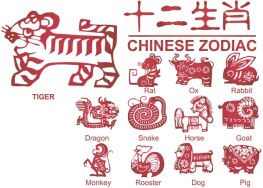
Chinese zodiac signs represent twelve different types of personalities. The zodiac traditionally begins with the sign of the Rat, and there are many stories about the origins of the Chinese Zodiac which explain why this is so. The Chinese animal zodiac, or sheng xiao in pinyin (literally translated as “born resembling”), is a rotating cycle of 12 years, with each year being represented by an animal and its character or features.
Traditionally these recurring animals were used to date the years, a different animal for each year, with each animal year repeated every 12 years. There are altogether 12 animals, which are, in order: rat, ox, tiger, rabbit, dragon, snake, horse, ram, monkey, rooster, dog and pig.
Actually the Chinese animal zodiac has certain similarities with the Western zodiac. Both have rotating cycles divided into 12 parts, and both imply the influence of each sign on a person’s personality. However, the differences are major. The Chinese animal zodiac is divided into years, while the Western zodiac is divided into months, and the animals are not associated with constellations.
There is no connection between the twelve animals of the Chinese Zodiac and the twelve signs of the Western Zodiac.
Western astrology is based upon a system which uses the path of the sun (and the moon and planets) through the heavens and look to the constellations (e.g. Aries, Taurus, Gemini etc) which lie along this path.
The Chinese system, on the other hand, focuses on Zi Wei or the Pole Star and the constellations which relate to it.
The Chinese system of time keeping is based on the Heavenly Stems and Earthly Branches forming a 60 year cycle. There are 10 sets of Heavenly Stems and 12 sets of Earthly Branches. The 10 Heavenly Stems have to be repeated 6 times in order to match the 12 Earthly Branches which are repeated 5 times to give you sixty pairs of stems and branches.
The names of the year are taken from the pairs of Stems and Branch in the sixty year cycle. For example 1924 marks the start of the sixty year cycle and has the name of Jia Zi (Jia is the Stem and Zi the Branch). This cycle is repeated every sixty year.
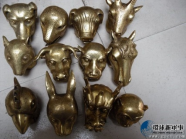
Rat—Charming
Year of Birth: 1912, 1924, 1936, 1948, 1960, 1972, 1984, 1996, 2008, 2020
Personality: Quick-witted, clever, clairvoyant, short-tempered, ambitious and manipulative. They are charming and attractive to the opposite sex, loyal and generous to people that they considers part of their pack. They are resourceful and eager to seek knowledge.
Ox—Patient
Year of Birth: 1913, 1925, 1937, 1949, 1961, 1973, 1985, 1997, 2009, 2021
Personality: Calm, diligent, modest, honest, straight-forward, easy-going but sometimes can be stubborn. A born leader, the ox has a tendency to inspire confidence in others. They hate failure and don’t like to be challenged.
Tiger—Sensitive
Year of Birth: 1914, 1926, 1938, 1950, 1962, 1974, 1986, 1998, 2010, 2022
Personality: Thoughtful, rebellious, sensitive, success-oriented, humanitarian, impatient and aggressive. Tigers are embodiment of lordliness and power. They are respected by other people, though they sometimes act antiauthoritarian and get into conflict with authority or elder people.
Rabbit—Articulate
Year of Birth: 1915, 1927, 1939, 1951, 1963, 1975, 1987, 1999, 2011, 2023
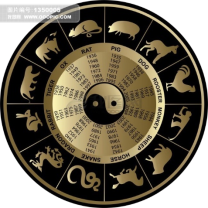
Personality: Popular, amiable, affectionate, sincere, and opportunistic. Rabbits enjoy being surrounded by family and friends. Sometimes they tend to get sentimental, but rarely lose temper. Being cautious and conservative, they are said to be financially lucky and will be successful in business.
Dragon—Healthy
Year of Birth: 1916, 1928, 1940, 1952, 1964, 1976, 1988, 2000, 2012, 2024
Personality: Energetic, intelligent, gifted, healthy, charismatic, noble and brave. The dragon is a popular and respected individual. A natural born leader, the dragon tends to inspire trust and confidence, and is good at giving orders, though sometimes they can be tactless and brash.
Snake—Lonely
Year of Birth: 1917, 1929, 1941, 1953, 1965, 1977, 1989, 2001, 2013, 2025
Personality: Smart, intuitive, sympathetic, analytical, cautious, introverted and insecure. Snakes prefer to be loners, relying strongly on their own intuition and judgment, and have little faith in other’s judgment. They hold a mine attitude towards money. Being financially lucky, they seldom worry about money.
Horse—Popular
Year of Birth: 1918, 1930, 1942, 1954, 1966, 1978, 1990, 2002, 2014, 2026
Personality: Sharp-witted, cheerful, smart, open-minded, talkative and talented. Horses enjoy traveling, entertainment and large crowds. An independent thinker, the horse does not like to hear other peoples’ suggestions. They sometimes tend to talk too much and become impatient
Goat—Elegant
Year of Birth: 1919, 1931, 1943, 1955, 1967, 1979, 1991, 2003, 2015, 2027
Personality: Gentle, calm, shy, creative, understanding, insecure and pessimistic. They worry a lot and like to complain. Appearance and material comfort are very important to them. They need lots of support, love, care, and reassurance.
Monkey—Clever
Year of Birth: 1920, 1932, 1944, 1956, 1968, 1980, 1992, 2004, 2016, 2028
Personality: Upbeat, clever, inquisitive, sociable and flexible. They are good at solving problems and making decisions. Monkeys can be loose cannons because they lack self-control and give up easily.
Rooster—Good Thinkers
Year of Birth: 1921, 1933, 1945, 1957, 1969, 1981, 1993, 2005, 2017, 2029
Personality: practical, cautious, conservative, alert, shrewd and sturborn. Roosters do not get along very well with others because they seem boastful and emotionally cold. They like dreaming and bravado. Firm in sticking to their own decisions, they often speak their mind.
Dog—Loyal
Year of Birth: 1922, 1934, 1946, 1958, 1970, 1982, 1994, 2006, 2018, 2030
Personality: Loyal, trustworthy, faithful, friendly and modest. They do well in business, but have trouble finding mates. Dogs have a sharp tongue and tend to find faults with many things. Dogs often feel guilty of telling white lies, and sometimes are too sensitive and moody
Pig—Chivalrous
Year of Birth: 1923, 1935, 1947, 1959, 1971, 1983, 1995, 2007, 2019, 2031
Personality: Polite, obliging, tolerant, sociable, naive and perfectionist. Pigs make a wonderful companion. Though they tend not to make lots of friends, they keep a few real and loyal friends. They like helping others, but also expect the same from others. Pigs have good taste and enjoy fine things. When they face a problem, they solve it with fortitude and honesty.(983 words)
1. What’s the difference between the Chinese animal zodiac and the Western zodiac?
2. What’s the year when you were born? According to the text tell your partner your character.
3. Peter was born in 1997. Please tell him what kind person he may be according to Chinese zodiac signs.
4. Please list 12 animals in correct time order.
The cheongsam, or Qipao in Chinese, is developed from a kind of ancient clothing of Manchu ethnic minority. In ancient times, it generally referred to long gowns worn by the people of Manchuria, Mongolia and the Eight-Banner.
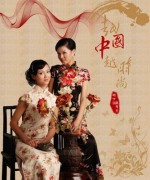
In the early years of the Qing Dynasty (1644—1911), long gowns featured collarless, narrow cuff in the shape of a horse’s hoof, buttons down the left front, four slits and a fitting waist. Wearers usually coiled up their cuff, and put it down when hunting or battling to cover the back of hand. In winter, the cuff could serve to prevent cold. The gown had four slits, with one on the left, right, front and back, which reached the knees. It was fitted to the body and rather warm. Fastened with a waistband, the long gown could hold solid food and utensils when people went out hunting. Men’s long gowns were mostly blue, gray or green; and women’s white.
Another feature of Manchu cheongsam was that people generally wore it plus a waistcoat that was either with buttons down the front, a twisted front, or a front in the shape of lute, etc.
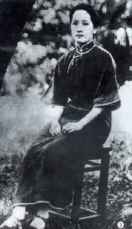
When the early Manchu rulers came to China, they moved their capital to Beijing and cheongsam began to spread in the Central Plains. The Qing Dynasty unified China, and unified the nationwide costume as well. At that time, men wore a long gown and a mandarin jacket over the gown, while women wore cheongsam. Although the 1911 Revolution turned over the rule of the Qing (Manchu) Dynasty, the female dress survived the political change and, with succeeding improvements, has become the traditional dress for Chinese women.

Till the 1930s, Manchu people, no matter male or female, all wore loose-fitting and straight-bottomed broad-sleeved long gowns with a wide front. The lower hem of women’s cheongsam reached the calves with embroidered flower patterns on it, while that of men’s cheongsam reached the ankles and had no decorative patterns.
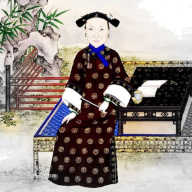
From the 1930s, cheongsam almost became the uniform for women. Folk women, students, workers and highest-tone women all dressed themselves in cheongsam, which even became a formal suit for occasions of social intercourses or diplomatic activities. Later, cheongsam even spread to foreign countries and became the favorite of foreign females.
After the 1940s, influenced by new fashion home and abroad, Manchu men’s cheongsam was dying out, while women’s cheongsam became narrow-sleeved and fitted to the waist and had a relatively loose hip part, and its lower hem reached the ankles. Then there appear various forms of cheongsams we see today that emphasize color decoration and set off the beauty of the female shape.

Why do Han people like to wear the cheongsam? The main reason is that it fits well the female Chinese figure, has simple lines and looks elegant. What’s more, it is suitable for wearing in all seasons by old and young.
The cheongsam can either be long or short, unlined or interlined, woolen or made of silk floss. Besides, with different materials, the cheongsam presents different styles. Cheongsams made of silk with patterns of small flowers, plain lattices or thin lines demonstrate charm of femininity and staidness; those made of brocade are eye-catching and magnificent and suitable for occasions of greeting guests and attending banquets.
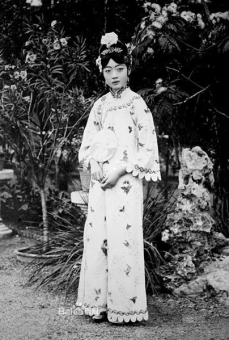
When Chinese cheongsams were exhibited for sales in countries like Japan and France, they received warm welcome from local women, who did not hesitate to buy Chinese cheongsams. Cheongsam features strong national flavor and embodies beauty of Chinese traditional costume. It not only represents Chinese female costume but also becomes a symbol of the oriental traditional costume.
1. What is the cuff used for if you wear Qipao?2. When did cheongsam almost become the uniform for women?
3. Why was Manchu men’s cheongsam out of fashion after the 1940s?
4. Why do Han people like to wear the cheongsam?

Auspicious numbers have long played a part in Chinese culture -- witness the 9,999 rooms of Beijing's Forbidden City -- and the right digits can still play a role in the choice of a home, telephone number or even a birthday.
Even numbers are luckier than odd. Two suggests harmony, six smooth progress. Four, a homonym for death, is unlucky, while nine, as highest single digit, stands for longevity.
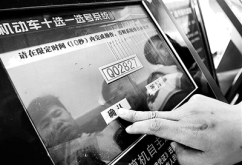
Eight, though, is the luckiest of all. The pronunciation of the number eight is similar to the character “fa” in Cantonese, which means prosperity, money and status. This opinion was mostly held by people in Guangdong province before, but after the reform and opening up about 20 years ago, it is popular all over the country with the movement of population becoming easier and faster.
It is surely no coincidence that the Games of the XXIX Olympiad opened at 8pm local time on the eighth day of the eighth month of 2008.
The 1988 Olympics in Seoul were held in late September to avoid the scorching north Asian summer and the Beijing Games were originally going to open in the relative cool of late August.
Although the current numerological superstitions originated in the south of China, there is plenty evidence of their hold in the north.
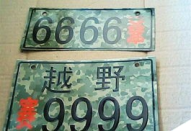
In Beijing, a hefty premium is paid for telephone numbers with plenty of eights, while apartments on the eighth floor are much coveted. Fourth floors, in name at least, rarely exist.
Apartment blocks designed to appeal to western buyers and prosperous Chinese often register no floors four, 13 and 14.
Expectant mothers in China are known to pick the dates of Caesareans carefully in order to endow their offspring with the luckiest birth date possible.
Back down south in Hong Kong, businessmen have paid huge sums for personalised car registration and in the 1990s the number “8” licence plate was sold for HK$5 million (343,308 pounds). (348 words)
1. Tell your friends what the Chinese numbers 2、4、6、8 mean in Chinese culture?
2. If there are no Floors 13 and 14 in an apartment block, do you think it inconvenient? If so, how can you solve the problem?

In historical operas and films, one can often see Chinese people performing kowtow - a traditional custom for worship on bended knees. It is said that the history of kowtow can be traced back as early as the legendary Emperor Xuan Yuan. How this custom originated and how it survived throughout history has a lot to do with the living standards and customs of ancient Chinese people.
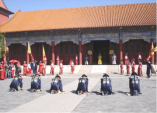
There was no formal chair or bench before the Han Dynasty (206BC-220AD) in China. People usually sat on mats made of reeds or bamboo strips at dinnertime, during discussions or reading. Guests were usually invited to sit on an extra mat to show respect. Even top leaders would sit on a mat, which was usually of a higher quality. For instance, in the Zhou Dynasty (1100-221 BC) on the occasion of meeting the monarch, the matting of the emperor was five-colored, with screens set beside it.
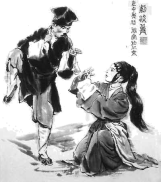
Therefore, the meaning of the words “to sit” in ancient times was completely different from what we understand today. “Sitting” is generally known as kowtow today: Both knees bent down on the mat, with the buttocks resting on the heels. When meeting a guest, the host usually had to stretch the upper part of the body to show respect. Gradually, the custom of kowtow became a part of daily life.
To show enough respect, one had to perform Kowtow in ancient times, especially to seniors and higher officials. During the Zhou Dynasty, there was a set of strict rules about kowtow, which played a very important role in maintaining authority and reverence towards emperors and, in turn, strengthening the feudal system. Emperors, therefore, were all willing to follow the tradition.
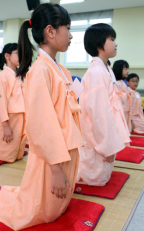
In the Han Dynasty, chairs and benches gradually appeared, which changed the original sitting gesture greatly. But the tradition of kowtow survived, and became a symbol of different classes. The custom was widely adopted in officialdom. For instance, the custom of kowtow was applied when officials met the emperor; when officials of lower rank met those from a higher rank; when minors met masters, etc. The custom not only prevailed on official occasions but also among the common people. During sacrifices and birthday celebrations for the elders, kowtow was also passed on from generation to generation. Later, the custom of zuoyi (a bow with hands folded in front) and jugong (a bow) were also added. With the abolishment of the feudal system in 1911, kowtow also ended gradually. (411 words)
1. Please describe how to kowow?2. On which occasions should be kowow performed?
3. Why were emperors willing to follow the tradition of performing kowow?
4. When was it that kowtow began to disappear gradually?
There exist in both spoken and written Chinese a great number of idioms also called chengyu, literally “set language” or “set expressions”, which are translated in English as “idiom”.
These may be general in nature or they may reflect famous events or stories from Chinese history, or they may be direct quotations from famous works of Chinese literature. The great majority of Chinese idioms are composed of four characters, which usually –though not always- can be parsed in groups of two.
Chinese idioms are usually composed in Classical Chinese and thus typically have a different grammatical structure from that of Modern Chinese. In their speech and writing, Chinese people make frequent use of idioms, since these often sum up briefly a meaning which it would otherwise take many words to express.
Contextually appropriate use of idioms tends to impress hearers as to the educational level and eloquence of the speaker. Since idioms are frequently used in formal speech and higher-level written materials, such as newspaper editorials and commentaries, they serve as a useful medium for helping learners move up on the proficiency ladder.

Familiarity with idioms can also be helpful for the non-native in gaining credibility in Chinese society. Indeed, almost nothing impresses a Chinese person more than a properly used idiom coming from the mouth of a foreigner.
There are a great number of idioms in Chinese, with certain dictionaries of idioms including well over 20,000 entries. All Chinese people know idioms, even though the total number known by any one individual will depend on her or his education, linguistic talent, general intelligence, etc…
Idioms are such an important part of Chinese popular culture that there even exists a game called chengyu jielong that involves someone calling out an idiom, with someone else then being supposed to think of another idiom to link up with the first one, so that the last character of the first idiom is the same as the first character of the second idiom, and so forth.
According to the Chinese search engine Baidu, the longest idiom chain ever created was all of 1,788 idioms long!
For the learner of Chinese as a second/foreign language, idioms are not so easy to understand, since the functional meaning of idioms is often different from the surface meaning and may, to quote an English idiom, be “greater than the sum of its parts”.
This is because Chinese idioms frequently involve literary allusions, extended meanings, and metaphors.
For example, consider the following idiom: 雪中送炭 xuě zhōng sòng tàn
This could be translated literally as “in the snow to deliver charcoal”; however, the actual meaning usually has nothing at all to do with “snow” or “charcoal”, but rather involves the rendering of aid to someone at time of need.
Idioms have a long history in Chinese, with some having existed for well over 2,000 years. Indeed, the grammatical structure of most Chinese idioms is that of Classical Chinese.
There are three common origins of idioms: ancient fables and historical tales; Buddhist and Confucian classics as well as other works of ancient Chinese literature; and habitual collocations of terms that gradually came to be stable and used in a certain way, even though their exact origin is not known today. To use a Chinese idiom, we could say there are in the Chinese language as many idioms “as there are hairs on an ox”.(598 words)
1. What is the main character of Chengyu?2. What does it depend on whether you can use Chengyu properly or not?
3. Why does the writer say idioms work as a useful medium for helping learners move up on the proficiency ladder?
4. What is chengyu jielong? Give an example please.
5. List three common origins of idioms.
6. Explain the follow Cehnyu in English.
衣食住行 yī shí zhù xíng
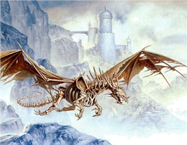
Dragon culture exists in both the Eastern world and the Western world. However, dragons have different reputation in western culture and in Chinese culture. The Western dragons are evil animals from hell. They usually have wings and can send out fire from their mouths.
▲Offspring of the Dragon
A dragon has an extending forehead indicating wisdom and antlers signifying longevity. Its ox’s ears stand for success in the imperial examination; it has tiger’s eyes as a sign of power; eagle’s claws showing bravery; while a fish’s tail implies flexibility and the horse’s teeth are a mark of diligence and so on.
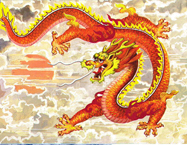
Dragons are deeply rooted in Chinese culture, so the Chinese often consider themselves as “the descendants of the dragon”. In Chinese culture, dragons are generous and wise. They are closely connected with the ancient royal family. According to the popular belief, if you are born in the year of dragon, you will be an intelligent and brave leader.
Why is dragon culture so prosperous in China? This is a mystic journey to find the key.
As a matter of fact, the dragon creation is the Chinese ancestors’ imagination. The dragon is now a kind of culture phenomenon. It has become a spiritual tie linking the nation. The dragon, as the symbol of the Chinese nation, has become part of the Chinese people. They have deep feelings for the dragon, and are proud to call themselves “the offspring of the dragon”.
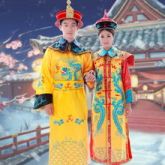
China is the birthplace of dragon culture. This has been shown by relics of the Neolithic Age discovered in the Yellow River, Yangtze River and Liaohe River Basins.
▲Origin of Dragon Culture
Dragon was one of the totem worship images in remote times when people liked to use the images of creatures or plants which they held in awe as symbols of their tribes. They believed that totem worship could bring them protection and good luck. Chinese dragon was used as a totem of the emperor, symbolizing the power of the emperor. Only emperor can use the things which were decorated with dragon pattern.
Chinese dragon is of magic power. It can change the length of its body as it wishes; it can either fly or swim. It is believed to control the weather, being responsible for causing snowstorm, lightning, and tornadoes.
People in ancient China often offered sacrifices to Dragon for favorable weather and good harvest. In the Warring States Period (475-221BC), dragon was often drawn in the painting on silk. Dragons often appear in Chinese idioms and tales. (323 words).
1. What’s the difference between western dragon and Chinese dragon?2. Why do Chinese say they are offspring of the dragon?
3. What’s Chinese dragon like? Describe it.
4. In ancient times, were common people allowed to wear clothes with dragons decorated? If not, why?
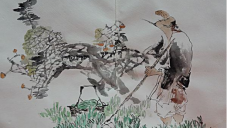
The tools used in traditional Chinese painting are paintbrush, ink, traditional paint and special paper or silk. It developed and was classified by theme into three types: figures, landscapes, and birds-and-flowers.
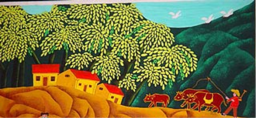

The birds-and-flowers type has its roots in the decorative patterns engraved on pottery and bronze ware by early artists. Among the common subjects in this genre, which reached its peak during the Song Dynasty (960 - 1279), are flowers, bamboo, birds, insects, and stones. The genre flourished under Emperor Huizong (1082 - 1135), who was an artist himself and was good at both calligraphy and traditional painting, especially paintings of exquisite flowers and birds.
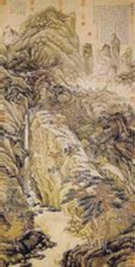
Painters who specialized in figures included images of immortals, emperors, court ladies, and common people in their works. Through their depictions of such scenes and activities as feasts, worship and street scenes, these artists reflected the appearance, expressions, ideals, and religious beliefs of the people. Chinese figure painting prominently features verve. The portrait of figures saw its peak during the Tang Dynasty (618 - 907). The master of painting, Wu Daozi (about 685 - 758), created many Buddhist murals and other landscape paintings that are marked by variety and vigor. One of his best known works is a depiction of the Heaven King holding his newborn son Sakyamuni to receive the worship of the immortals.
As far back as the Northern and Southern Dynasties (386 - 589), landscape painting separated from the figure genre and continued to enjoy popularity through the Tang Dynasty. This style reflected people’s fondness for nature. The artist’s use of ink and brush to paint a landscape changed, depending on the scenery itself, the weather (sunny or rainy day), the time of day (morning or night), and the season. The earliest known landscape painting was the Spring Outing by Zhan Ziqian of the Sui Dynasty (581 - 618). It shows an enchanting spring scene with people enjoying popular activities: gentlemen riding and ladies boating. A waterfall behind a bridge, near slopes and distant mountains are drawn with clear, fluent lines.
During the Ming (1368 - 1644) and Qing (1644 - 1911) Dynasties, innovation was stressed, and delicate seal marks, calligraphy, poems and frames increased the elegance and beauty of the paintings.
Much skill is required of the Chinese painter, who must use the soft brush with strength and dexterity to create a wide variety of lines-thick, thin, dense, light, long, short, dry, wet, etc. Depending on his skills, he might specialize in detailed and delicate line drawing (Gongbi) or abstract, impressionistic (Xieyi) paintings. Line drawing is the basic training of a painter, who must learn it well before moving on to the delicate details of realistic scenes or the more abstract spirit of impressionism. Another special skill worthy of mention is painting with fingers instead of a brush, which creates a very different effect.
No matter what the subject or the style, traditional Chinese painting should be filled with imagination and soul. A traditional story that captures the Chinese view of painting tells about the establishment of a royal college of painting during the reign of Emperor Huizong. Examinations were held to recruit the best painters. Examinees were asked to draw a picture that reflected the joy of people who had just returned from a spring outing, an outing that had been so pleasant that even the horseshoes seemed fragrant. Many tried their best to describe this bright scene but only one work was chosen; the painter simply drew a horse’s hoof followed by butterflies which were in graceful flight. This painter had managed to capture the essential spirit and beauty of the scene. (615 words)
1. How many types can Chinese painting be divided into according its theme?2. When did landscape painting separated from the figure genre (人物题材)?

Magic goes against the rules of nature and physics. During the 2009 CCTV Spring Festival gala, magician Liu Qian managed to drop a coin into a glass placed upside down and transformed a finger ring into an unbroken egg, under the close and watchful eyes of the studio audience, leaving tens of thousands of viewers puzzled by his showmanship.
The mind-blowing performance has set off an enthusiasm of magic all over the country. However, people seldom know that more than 3,600 years ago, the history of magic in China was already underway.
In China, magic goes back many years and has developed from superstitious wizardry into a technologically inspired, sophisticated art form.
Ancient Chinese magic made its appearance as early as 1,600 BC, and was closely associated with divination and wizardry, according to Biographies of Exemplary Women (Lie Nu Zhuan) by Liu Xiang, the well-known historian of the Han Dynasty (206 BC-AD 220).

In 108 BC, Liu Che, emperor of the Western Han Dynasty, gathered more than a hundred acrobats and magicians in the imperial palace and hosted the biggest magic show in history. Zhang Heng’s Western Metropolis Rhapsody (Xi Jing Fu西京赋) records that Duke Huang of the Eastern Sea (Donghai Huanggong), a showman and magician, did knife-swallowing and fire-spitting shows at this gathering.
Magic continued to thrive in the Tang Dynasty (AD 618-907) and began to branch off into separate fields in the Song Dynasty (960-1279). Some traditional Chinese tricks such as “Immortal Plants Bean” and “Ancient Color Trick” marked the start of international recognition for Chinese magic.
In the late Qing Dynasty (1644-1911), there were many cultural exchanges between China and the West. The first generation of modern Chinese magicians like Ching Ling Foo (Zhu Liankui), Han Pingchien and Mu Wenqing went abroad to perform and also learned to incorporate foreign stunts into traditional tricks.
The later generation of magic practitioners, headed by Zhang Huichong, furthered the hybrid form of magic acts by infusing traditional Chinese magic into Western-style illusion acts.
After China’s reform and opening-up in the late 1970s, magicians from abroad began visiting China more frequently. In 1980, Marc Wilson from the United States became the first magician to perform on the Chinese mainland since the founding of New China in 1949. In 2002, David Copperfield caused a stir with his performances of walking through the Great Wall.
And now, Liu Qian has created a hit with his remarkable close-up performances and exposed Chinese audiences to a new, refreshing and delightful art form.
1. How long is it since magic in China appeared?2. When did magicians from abroad begin visiting China more often?
3. Who was it that wrote a book recording knife-swallowing and fire-spitting shows?



